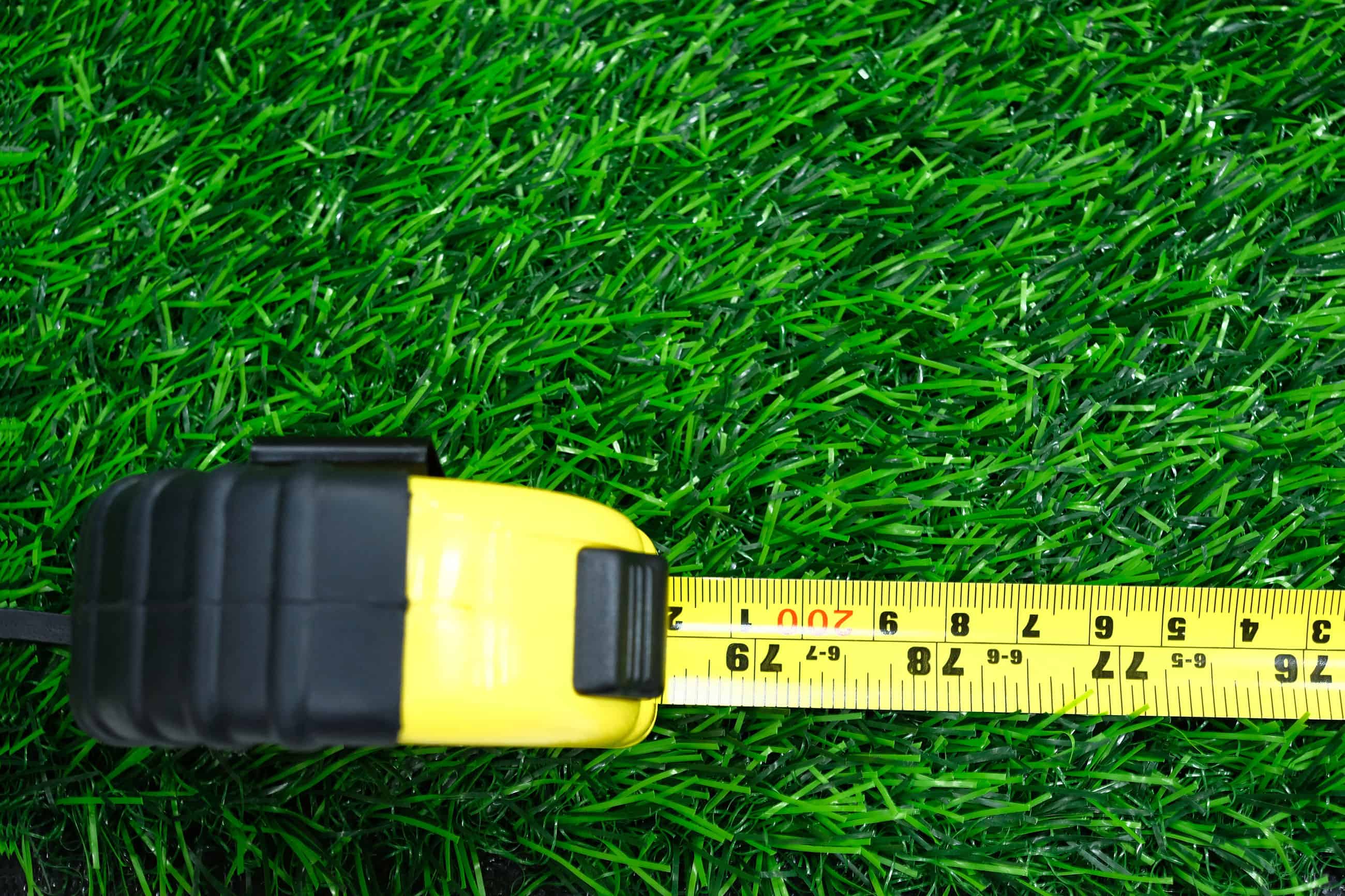
Having a lawn and maintaining it means keeping track of everything that happens on it, acting preventively, and always staying up-to-date with the activities that need to be carried out seasonally. Everything starts with the surface area you are dealing with and what needs to be done to care for and maintain a lawn of a specific size. This raises the question, “How do you measure a yard?”
The size of the yard will dictate your other lawn maintenance activities. Knowing the exact dimensions is the foundation of effective lawn care. If you know the precise area, you will also know how much fertilizer to buy or how much water is needed for irrigation. This helps you save resources and avoid unnecessary waste. Additionally, you will know how much pesticide to purchase when it’s time to protect the grass from pests.
If you are interested in lawn care services, you will first be asked the size of the area because the service price will be determined based on it. Precise measurements enable you to receive a quote that reflects the real needs of your yard, providing better value for your investment.
Generally, when planning any project in your yard or garden, accurate measurements will be the basis for creating a budget and a timeline for the activity to be carried out. Accurate figures allow for better financial planning and reduce the likelihood of unexpected costs.
Let’s see what you need to measure your lawn and the available methods.
Popular Tools for Measuring Lawn Area
Before any activities or projects on the lawn, it is essential to measure its area. Accurate measurements allow you to utilize the space efficiently, avoid mistakes, and save time and money. However, measuring can be challenging due to uneven terrain, large areas, or simply not knowing the appropriate methods or having the correct tools. The tools range from classic measuring tapes to the most advanced mobile applications.
Measuring Tape
A measuring tape is stretched across the ground to measure straight-line distances. It is simple to use, affordable, and easily accessible.
The measuring tape is usually the best choice for smaller yards or detailed measurements, such as garden beds or terraces.
Measuring Wheel
A measuring wheel is rolled along the ground to measure the distance traveled. Like the measuring tape, it is straightforward to use. It is typically used for longer distances and uneven terrain.
It will be an excellent solution for medium to large yards. However, keep in mind that they are not very accurate for measuring uneven, rough, or soft terrain, and cannot account for elevations,
Stakes and String
Place stakes at each corner of your yard, then stretch string between them to mark straight lines. This method provides clear visual markers and helps create right angles and straight-line areas. It is recommended when planning features like garden beds, pathways, or other rectangular or square areas.
Graph Paper
This is a very interesting tool used by those who like visually representing everything on paper. How does it work? Draw a scaled-down version of your yard on graph paper, using each square to present a certain distance (e.g., 1 square = 1 foot). This way, you have a visual representation in front of you and can easily imagine a new layout in your yard and plan new landscape elements. Using graph paper is recommended for detailed planning and designing your outdoor corner.
Online Yard Measurement Tools
The modern age has also brought relief in this field, making it very simple to measure and obtain accurate dimensions with the help of dedicated online tools. Typically, yard dimensions are entered into online maps or landscape design software, and you get the exact area and what could be planned in that space.
Online tools offer various conveniences and precision; you just need to enter the dimensions, and within seconds, you get accurate calculations. You will see that online yard measurement tools often have additional features, such as area calculations and suggested yard designs.
Various online tools provide precise measurements, allowing you to make certain adjustments in the space and visually plan new details. These tools are popular among those who prefer a technological approach and feel comfortable and confident using them. Google Earth, satellite imagery applications, or tools like Planimeter can provide convenient and accurate ways to measure your yard.
Drones
Drones are also modern tools used to capture images and perform measurements from the air. This provides a comprehensive overview and accurate measurements of large areas.
Mobile Applications
Explore which mobile applications are the most reliable. They use GPS and augmented reality to measure distances and the total area. For reliability, some lawn care and sod landscaping experts will advise you to double-check measurements with a measuring tape, even when using mobile apps.
Step-by-Step Guide on How to Measure a Yard
Before you start measuring your yard, it’s essential to prepare it properly. Proper preparation leads to accurate measurements and generally makes the measuring process more manageable.
Remove any objects obstructing the measurement, such as stones, branches, tools, or decorative elements. This is important because if they remain, they can interfere with the measurement and lead to inaccurate results. A clean and flat yard allows for easier and more precise measuring.
Place stakes at each corner of the area you want to measure, then connect the stakes with string to mark the straight edges. This helps visualize the exact boundaries of the measured area and minimizes measurement errors.
Tips for Successful Preparation:
- Use Quality Stakes and Strong String: Invest in stakes that are sturdy enough to stay in place and string that won’t easily break.
- Pull the String Tight: Ensure the string is taut and forms a straight line between the stakes to ensure measurement accuracy.
- Check the Angles: After placing the stakes and string, check the angles using a right-angle square to ensure all corners are accurately positioned.
Measuring Yard Area – Step by Step
Measuring the area of a yard or lawn can vary in complexity depending on its shape and the terrain. Whether rectangular, triangular, circular, or irregular, each shape requires a different approach. While some shapes, like rectangles and circles, are straightforward, irregular shapes can be more complex and may require advanced techniques. Also, most tools and methods for measuring lawn spaces will only be precise on flat, firm, and smooth terrain.
Measuring Rectangular and Square Yards
Rectangular and square yards are the easiest to measure. You simply need to measure the length and width of the yard and multiply these two values. This measurement usually uses essential tools and techniques, such as ropes or measuring tapes.
- Formula: Area = Length x Width
- Example: If the length is 20 feet and the width is 15 feet, then the area = 20 x 15 = 300 square feet.
Measuring Triangular Yard Areas
For triangular yards, you need to know the base and height. The height is the vertical distance from the base to the opposite vertex.
- Formula: Area = 0.5 x Base x Height
- Example: If the base is 10 feet and the height is 6 feet, then the area = 0.5 x 10 x 6 = 30 square feet.
Measuring Circular Yard Areas
For circular yards, measure the radius (the distance from the center to the edge of the circle) and use the formula for the area of a circle.
- Formula: Area = π x radius x radius
- Example: If the radius is 7 feet, the area = 3.14 x 7 x 7 = 153.86 square feet.
Measuring Irregularly Shaped Yards
Irregular shapes are more complex and often require dividing the shape into smaller, regular shapes (such as rectangles, triangles, and circles), calculating the area of each, and then summing these areas.
- Step-by-Step Process:
- Divide the Yard: Break the yard into smaller sections of regular shapes.
- Calculate Each Section: Use the formulas described above to calculate the area of each section.
- Sum the Areas: Add the areas of all sections to get the total area.
- Example: If your yard is bean-shaped, measure the most extended length and width, divide the shape into smaller sections, calculate each section’s area, and sum them up.
How to Measure Your Yard Area Using Online Tools
Tools like Google Earth, satellite imaging applications, or Planimeter enable easy and precise measurement of a specific area. These tools use high-resolution satellite images to provide a detailed aerial view of your property, allowing you to accurately measure your lawn’s dimensions, saving time and effort. Keep in mind that it can be challenging to see the exact perimeter of some yards using satellite imaging, so these tools are not always precise.
Tools Overview
- Google Earth uses high-resolution satellite images to provide a detailed aerial view of your property, enabling accurate lawn measurements.
- Satellite Imaging Applications: Offer simple interfaces and real-time data, providing precise figures to calculate area.
- Planimeter: A specialized tool where you can draw the boundaries of your lawn on a map and automatically calculate the area.
How to Use Online Tools
Here’s how you can use online tools to measure your yard accurately:
- Access the Tool: Open Google Earth or Planimeter on your device.
- Enter Location: Enter the address or location of your yard in the search bar.
- Zoom In: Use the zoom function to focus on the area you want to measure.
- Mark Boundaries: Using the measurement tool, mark the boundaries of your lawn, carefully following the edges for accuracy.
- Calculate Area: Once you finish, the software will calculate the total area of your lawn.
Some of the most popular applications are Global Syn-Turf and Measure My Lawn.
Benefits of Online Tools for Lawn Area Calculation
- Precision: Online tools and applications use satellite images and GPS data to provide accurate measurements, reducing the risk of human error.
- Accessibility: They are available on any device with internet access, allowing you to get accurate data from the comfort of your home.
- Versatility: These tools can handle various shapes and sizes, making them suitable for any yard configuration.
- Instant Calculations: Measurements are calculated instantly, saving time compared to manual methods.
- Data Storage: Some tools allow you to save or print the obtained data for future use or sharing with contractors or landscapers.
Specific Calculations for Lawn Square Footage
When you have accurate measurements of your lawn for ordering sod, you will perform the task more efficiently and prevent potential additional costs. If you purchase too much sod, you will end up wasting the excess, which is highly uneconomical. On the other hand, if you buy too little, you will be forced to place additional orders, which can mean extra costs for transport and labor.
The correct quantity, based on the measurements of your lawn, helps maintain a uniform appearance and aesthetics. When you have enough sod to cover the entire area, you can avoid gaps or mismatched sections that disrupt the lawn’s aesthetics. Precise quantities of sod allow for a continuous and neat installation, contributing to a better visual impression.
Proper planning and accurate measurements also reduce the time required for installation. If you know exactly how much sod you need, you can precisely organize labor and time for placement.
Additionally, you will better plan the logistics of the entire process. You can accurately calculate the amount of soil, fertilizer, and water needed for successful sod installation and maintenance.
So, what is the formula?
To accurately calculate how much sod you need for installation, you first need to measure the total area in square feet that you want to cover with sod. Then divide that area by the square footage of one piece of sod.
A typical piece of sod measures 16 inches x 24 inches, which equals 2.67 square feet. When you divide the total area you want to cover by the area of one piece of sod, you get the total number of pieces you need.
The dimensions of sod pieces can vary from vendor to vendor. If the sod has different sizes, multiply the length and width (in inches), then divide that product by 144 to get the square footage of that sod piece. Then, use that square footage instead of 2.67 square feet in the formula above.
One pallet of sod usually contains between 450 and 500 square feet of sod. To know precisely how much sod to order, ask your supplier for the dimensions of the sod pieces and how many pieces fit on one pallet.
It is advisable to purchase slightly more sod than you calculated you need, usually about 5% more. This will allow you to cover any measurement errors or replace any damaged sod pieces. Buying a slightly larger quantity of sod ensures that you won’t run out of material during installation and allows you to avoid unnecessary interruptions and additional orders.
How to Calculate Lawn Area for Fertilization
Before applying fertilizer to your lawn, you must calculate the lawn area using square feet. This can usually be done using simple geometry. Here are the methods based on the shape of your lawn:
- Square or Rectangular Lawn: Multiply the length and width (in feet).
- Triangular Area: Multiply the height by half of the base.
- Circular Area: Take the circle’s radius, square it, and multiply it by Pi (π).
If your lawn is irregularly shaped, divide it into several sections of different shapes. Calculate the area of these sections and add their areas to get the total area. Do not include areas not covered by grass (paths, structures, landscaped beds).
Sometimes, the lawn cannot be easily divided into simple geometric figures. In such cases, you can calculate the area using the “offset” method.
Offset Method:
- Measure the Longest Line: Measure the longest line across the lawn (e.g., horizontally across the width). Divide it into approximately equal sections.
- Measure Perpendicular Distances: At each division point, measure the distance from edge to edge of the lawn at a right angle to the longest line.
- Calculate Average Distance: Add up each of these distances and divide by the number of sections to get the average distance (the more measurements you take, the more accurate the total area will be). Then, use the formula to calculate the area.
Measuring your lawn using the offset method is not complicated at all.
Fertilizer Calculation:
In the next step, determine the percentage of nitrogen (N) in the fertilizer and establish the standard application rate, i.e., the amount of that fertilizer needed to apply 1 lb (pound) of nitrogen per 1000 square feet.
The nitrogen percentage is indicated on the fertilizer packaging, typically as the first number in the “NPK” formulation. The most common three-digit code shows the percentages of elemental nitrogen (N), phosphorus (P) as phosphate (P₂O₅), and potassium (K) as potassium oxide (K₂O). The fertilizer is always recommended to be rich in nitrogen, especially for spring application.
For example, a formulation marked as 20-5-10 contains 20% nitrogen, so 100 lbs of this fertilizer includes 20 lbs of nitrogen.
Steps to Determine the Percentage of Nitrogen:
- Find the first number in the NPK formulation on the fertilizer bag. This number represents the percentage of nitrogen in the fertilizer.
- If the nitrogen percentage is 20%, 100 lbs of fertilizer contains 20 lbs of nitrogen.
- To get 1 lb of nitrogen, use the following formula:
Amount of fertilizer = 100 lb/percent nitrogen
In this example, the amount of fertilizer is 100 lb / 20 = 5 lb. So you need 5 lb of fertilizer to get 1 lb of nitrogen per 1000 square feet.
- Therefore, you need 5 lbs of fertilizer to get 1 lb of nitrogen per 1000 square feet.
What Are the Average Yard Sizes?
The size of a yard can vary significantly depending on whether you are in an urban or suburban area. In urban areas, where space is often limited, yards are typically smaller. In suburban areas, where space is less constrained, yards are usually more spacious.
The average yard size in urban environments can be around 500 to 1,000 square feet. These smaller yards are often sufficient for creating a small garden, a patio, and basic outdoor activities.
The average suburban yard is 2,000 to 5,000 square feet, but it can be significantly larger. Homeowners have more space for gardening, children’s play areas, and even pools or sports courts.
Tips That Can Be Useful When Measuring Lawn Area
- Use Reliable Tools: You should have a reliable measuring tape, measuring wheel, or laser distance meter. These tools can help you get precise measurements.
- Measure Twice, Cut Once: Always measure each side at least twice to confirm accuracy. Minor errors can lead to significant deviations over larger areas.
- Divide and Conquer: Split irregularly shaped lawns into smaller, more manageable sections such as rectangles, triangles, and circles. Measure each section individually and then sum the areas.
- Record the Numbers: Write down each measurement to avoid confusion or forgetting figures. Keeping a sketch or diagram of your lawn can also help.
- Double-Check Calculations: After measuring, recalculate the total area to ensure you have accurate data. Using a calculator or spreadsheet can minimize errors.
What Mistakes to Avoid?
- Ignoring Slopes and Uneven Terrain: If the lawn has slopes or uneven parts, take them into account when measuring. Measuring only flat areas may not accurately reflect the actual surface area.
- Excluding All Parts: Ensure you measure every part of the lawn where you plan to work. Missing sections can lead to underestimating the needed amount of material.
- Rounding Errors: Avoid premature rounding of measurements. Use precise measurements to maintain accuracy until the final calculation.
- Incorrect Unit Conversion: All measurements must be in the same units (feet or meters), and if necessary, they must be converted properly.
- Not Accounting for Obstacles: When measuring, consider all permanent obstacles such as trees, shrubs, or other garden structures. Subtract their areas if your project won’t cover or affect them.
FAQs
What if my lawn has an irregular shape?
Divide the lawn into regular shapes (rectangles, triangles, circles). Measure each shape individually, calculate their areas, and sum them for the total area.
How do I account for obstacles like trees or flower beds?
Measure the area of each obstacle and subtract it from the total area. For example, subtract that from the total area if a tree occupies 5 square feet.
What tools are best for measuring large lawns?
A measuring wheel or laser distance meter can be very efficient for large lawns. These tools can quickly cover a larger space and often provide more accurate readings than measuring tapes.
How do I convert inches to feet?
Divide the number of inches by 12 to convert to feet. For example, 24 inches equals 2 feet (24 ÷ 12 = 2).
Can I use online tools or apps to measure my lawn area?
Many online tools and smartphone apps can help you measure and calculate your lawn area. They can be convenient and accurate if used correctly.
What if I measure incorrectly?
Always double-check your measurements and calculations. If you still suspect an error, consider hiring a professional landscaper or surveyor to confirm your measurements.
How much extra material should I buy?
Buying an additional 5-10% of material is advisable to cover measurement errors, waste, and cut-ins.
What else should you consider when measuring yard area?
Some yards have slopes, stairs, and other uneven parts. Many wonder how to measure a slope accurately.
Measuring a Slope
Measuring a slope is typically done by placing stakes at the highest and lowest points of the lawn, with intervals of 8 feet between them. Once the stakes are in place, tie a string to the bottom of the highest stake at ground level.
The string is then leveled using a spirit level before being tied to the next stake, and the process is repeated until you reach the lowest stake. Next, measure the total length of the string, as well as the height of the string at each attachment point along the stakes. The final total height is divided by the total length of the string.
Measuring Paths, Patios, or Gardens
Measure the area of paths, patios, or gardens (as noted above if they are irregular in shape). Calculate their areas and add them to the other parts you have measured.
Conclusion
Accurate information about the size of your lawn allows for efficient planning and management of lawn care. For example, knowing the area helps accurately calculate the required amount of pesticides and fertilizers, avoiding excessive use of chemicals that can harm plants and the environment. These measurements are also crucial for proper irrigation, as they allow for precise determination of the amount of water needed for evenly watering the entire lawn.
Additionally, precise measurements help plan landscaping work and install additional equipment, such as irrigation systems, lighting, and pathways. This ensures that all components are correctly positioned and functional. Ultimately, knowing the area of your lawn makes it easier to estimate maintenance costs, whether for regular upkeep or larger improvement projects.
Feel free to contact The Grass Outlet for expert and reliable advice and instructions and to learn about products that suit your lawn’s measurements.
Sources:
The ultimate guide to measuring your lawn: tips and techniques | Smart Turf® Artificial Grass. (2024, March 5). https://smartturf.com/measure-lawn-tips/
How to calculate your yard’s square footage [Online tools] – GreenView. (n.d.). GreenView. https://www.greenviewfertilizer.com/articles/how-to-calculate-your-yard-s-square-footage-online-tools


